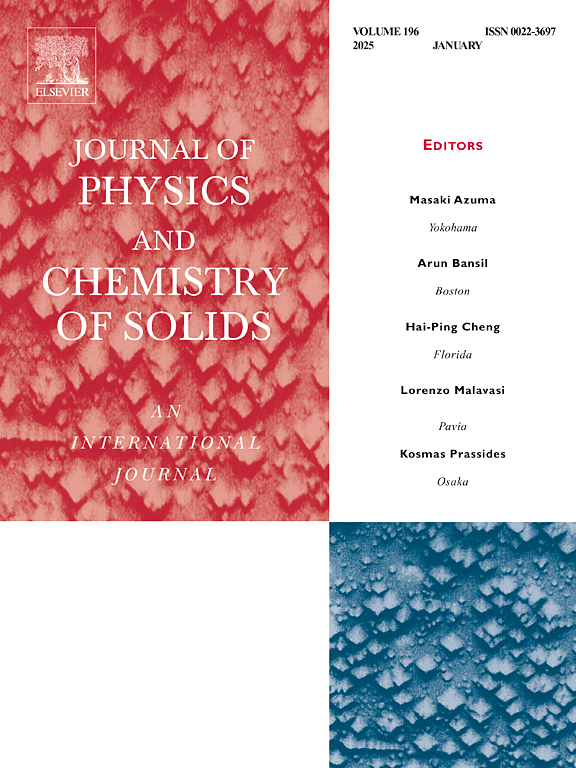Ordered charge transport in supramolecular assemblies for enhancing the performance of HTL-free carbon-based perovskite solar cells
IF 4.3
3区 材料科学
Q2 CHEMISTRY, MULTIDISCIPLINARY
引用次数: 0
Abstract
The crystallization degree of perovskite (PVK) crystals is vital for solar cell efficiency, as it affects charge carrier transport. Researchers are using organic molecules to improve PVK crystallization, but face challenges with charge transport efficiency at interfaces due to the principle of maximum entropy. Here, living supramolecular assemblies (LSA) were prepared in the two-dimensional confined space of layered double hydroxide (LDH). The carbonyl (C![]() O) functional groups in LSA assembled from terephthalic acid (TPA) coordinated with the uncoordinated Pb2+ ions in the PVK light-absorbing layer, passivating grain boundary defects. Importantly, the ordered charge transport in LSA can decrease the carrier complexation, which are commonly the main causes of charge carrier recombination and the decline in device performance. Thus, following the addition of TPA-LSA, carbon-based perovskite solar cells (PSCs) processed entirely in air achieved a maximum photoelectric conversion efficiency (PCE) of 13.86 %. This work provides an effective strategy for the enhancing the efficiency PSCs by using the supramolecular materials.
O) functional groups in LSA assembled from terephthalic acid (TPA) coordinated with the uncoordinated Pb2+ ions in the PVK light-absorbing layer, passivating grain boundary defects. Importantly, the ordered charge transport in LSA can decrease the carrier complexation, which are commonly the main causes of charge carrier recombination and the decline in device performance. Thus, following the addition of TPA-LSA, carbon-based perovskite solar cells (PSCs) processed entirely in air achieved a maximum photoelectric conversion efficiency (PCE) of 13.86 %. This work provides an effective strategy for the enhancing the efficiency PSCs by using the supramolecular materials.

求助全文
约1分钟内获得全文
求助全文
来源期刊
CiteScore
7.80
自引率
2.50%
发文量
605
审稿时长
40 days
期刊介绍:
The Journal of Physics and Chemistry of Solids is a well-established international medium for publication of archival research in condensed matter and materials sciences. Areas of interest broadly include experimental and theoretical research on electronic, magnetic, spectroscopic and structural properties as well as the statistical mechanics and thermodynamics of materials. The focus is on gaining physical and chemical insight into the properties and potential applications of condensed matter systems.
Within the broad scope of the journal, beyond regular contributions, the editors have identified submissions in the following areas of physics and chemistry of solids to be of special current interest to the journal:
Low-dimensional systems
Exotic states of quantum electron matter including topological phases
Energy conversion and storage
Interfaces, nanoparticles and catalysts.

 求助内容:
求助内容: 应助结果提醒方式:
应助结果提醒方式:


